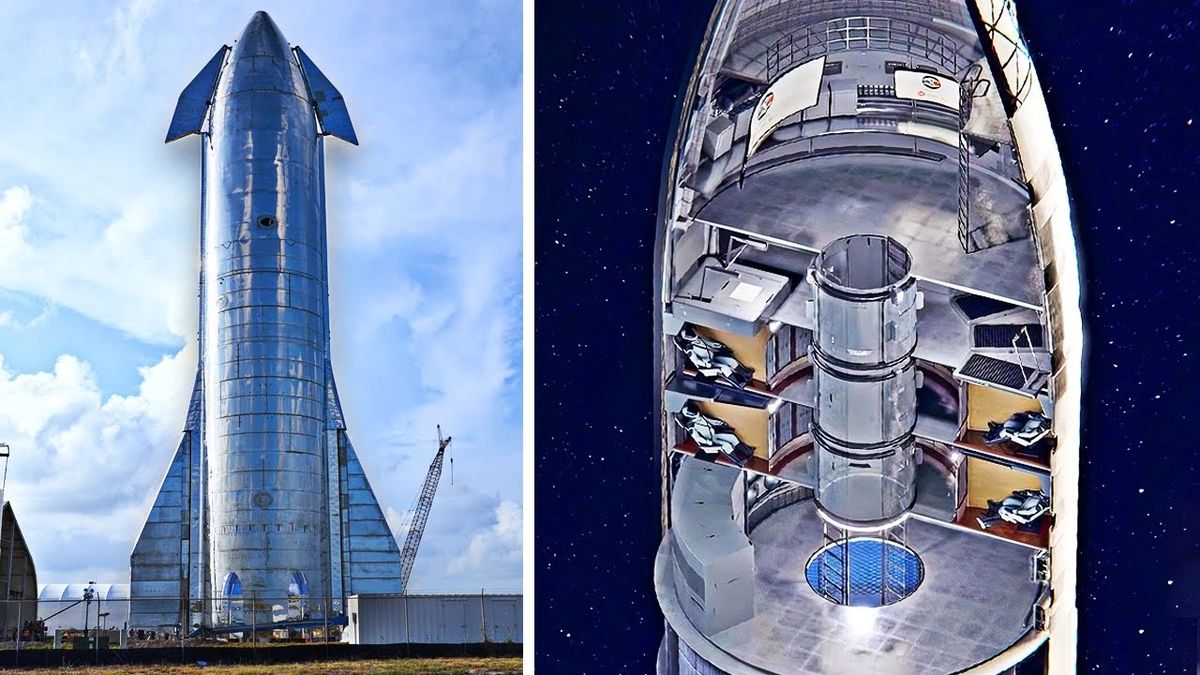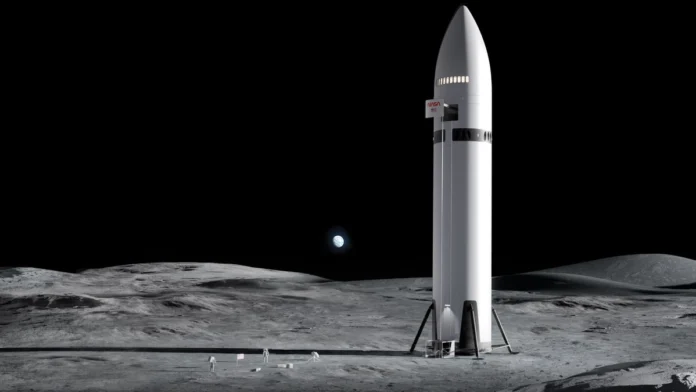Here’s the thing: While everyone’s buzzing about the Artemis missions aiming to put humans back on the Moon, there’s a colossal rocket silently (well, not so silently during testing!) undergoing rapid development that could completely change the game. I’m talking about SpaceX Starship. It’s not just another rocket; it’s a fully reusable system designed to drastically reduce the cost of space travel and, dare I say, make interplanetary travel a reality. Let’s dive into why Starship’s progress is so vital, especially in the context of the upcoming Artemis missions.
Why Starship Matters for Artemis (and Beyond)

The Artemis program, spearheaded by NASA, aims for sustainable lunar exploration. But here’s where it gets interesting. A crucial component of Artemis III, the mission slated to land astronauts on the Moon in the coming years, relies heavily on a variant of Starship. Specifically, the Human Landing System (HLS) Starship. So, while NASA’s Orion spacecraft will get the astronauts close, it’s SpaceX’s Starship that will actually ferry them to and from the lunar surface. It’s a partnership, yes, but it highlights the pivotal role SpaceX is playing.
Now, you might ask, “Why not just use Orion for the landing too?” Well, Orion is fantastic for deep space transit, but landing a large crew safely on the Moon and then launching them back requires a different beast altogether. Starship, with its immense size and capacity, is designed to do just that. The initial Starship HLS design has undergone changes. As per the recent updates, Starship is essential for Artemis as it ensures safe travel.
But, but, but… There’s a catch (isn’t there always?). Starship is still under development. A common mistake I see people make is assuming that it’s a done deal. We’ve seen impressive test flights, including successful landings (and some less successful explosions!), but significant hurdles remain. The “Why” angle here is that the success of Artemis III is intrinsically linked to the success of Starship development. If Starship encounters major delays or failures, the entire Artemis timeline could be jeopardized. It’s all intrinsically intertwined.
Starship’s Technological Leaps
What fascinates me is the sheer ambition behind Starship. It’s not just about going to the Moon; it’s about building a fully reusable transportation system. Think about it: every part of the rocket, from the Super Heavy booster to the Starship spacecraft itself, is designed to return to Earth and be reused. This is a game-changer because it dramatically reduces the cost per launch. Traditional rockets are mostly expendable. Starship flips that model on its head.
One of the key technologies enabling this reusability is the Raptor engine. These engines use methane and liquid oxygen, which are relatively easy to produce on other planets, opening up the possibility of refueling Starship on Mars, for example. Methane production is a critical requirement to maintain future space missions.
Another critical aspect is the heat shield. As Starship plunges back into Earth’s atmosphere, it experiences extreme temperatures. The heat shield, made of thousands of hexagonal tiles, protects the spacecraft from burning up. The way SpaceX approaches these problems with practical engineering is amazing.
Challenges and Potential Roadblocks
Let’s be honest, the path to a fully operational Starship isn’t without its bumps. I initially thought this was straightforward, but then I realized the scale of challenges SpaceX faces is enormous.
First, there’s the regulatory hurdle. Starship launches require approval from various government agencies, and these approvals can be time-consuming and complex. Environmental concerns surrounding the launch site are also a factor. SpaceX recently secured the necessary FAA approvals. Second, there are technical challenges. Achieving consistent and reliable reusability is incredibly difficult. Each landing provides valuable data, but also carries the risk of failure. Third, funding. Developing Starship is an expensive endeavor, and SpaceX needs to secure the necessary investment to keep the program on track.
Starship’s Impact on Future Space Exploration
The potential impact of Starship on future space exploration is immense. If Starship succeeds, it could: dramatically reduce the cost of accessing space, enable large-scale lunar and Martian settlements, and facilitate scientific missions to explore the outer solar system. It could even potentially lead to asteroid mining operations. According to the latest circular on the official SpaceX website, they are planning to increase the number of launches by 2025.
The one thing you absolutely must double-check is that the development timelines align to avoid disruptions to Artemis mission goals. A common mistake I see people make is assuming Starship will be ready on time. It’s best to keep checking the official portal.
In the grand scheme, the future of space might be rewritten.
And so, Starship advances, not just as a vehicle, but as a catalyst, pushing the boundaries of what’s possible.
FAQ About SpaceX Starship and Artemis
What is the main goal of the Artemis program?
The Artemis program aims to establish a sustainable presence on the Moon, paving the way for future missions to Mars.
How is SpaceX’s Starship involved in the Artemis missions?
A variant of Starship, the Human Landing System (HLS), will be used to transport astronauts to and from the lunar surface during the Artemis III mission.
What are the key challenges facing Starship’s development?
Challenges include regulatory approvals, technical difficulties in achieving reliable reusability, and securing adequate funding.
When is the planned launch date for Artemis III?
While sources suggest a specific time, the official confirmation is still pending. It’s best to keep checking the official portal NASA website .
What are the benefits of Starship’s fully reusable design?
Full reusability dramatically reduces the cost of space travel, making it more accessible and sustainable.
What are the key features of reusable spacecraft?
These ships can launch into space, deliver payloads or personnel, and then safely return to Earth for refurbishment and reuse. This reduces mission costs and increase flight frequency.

